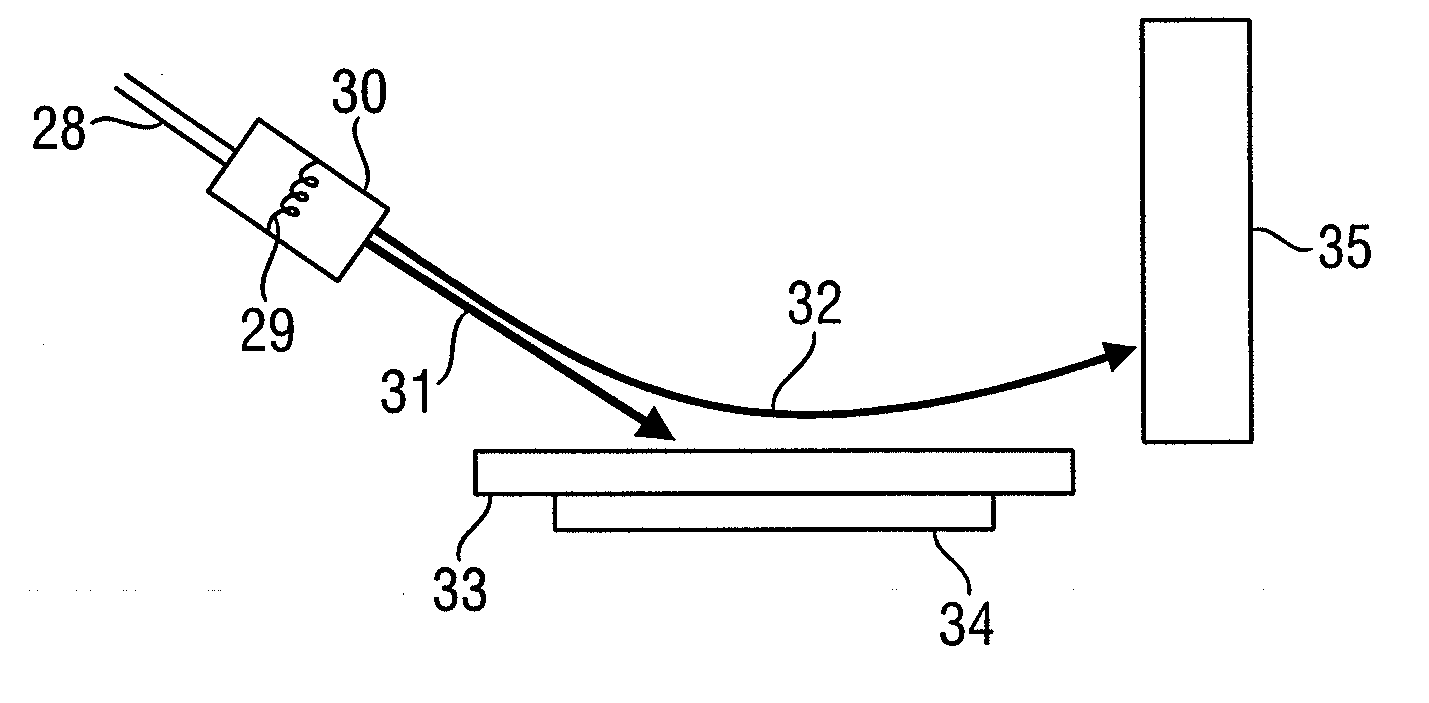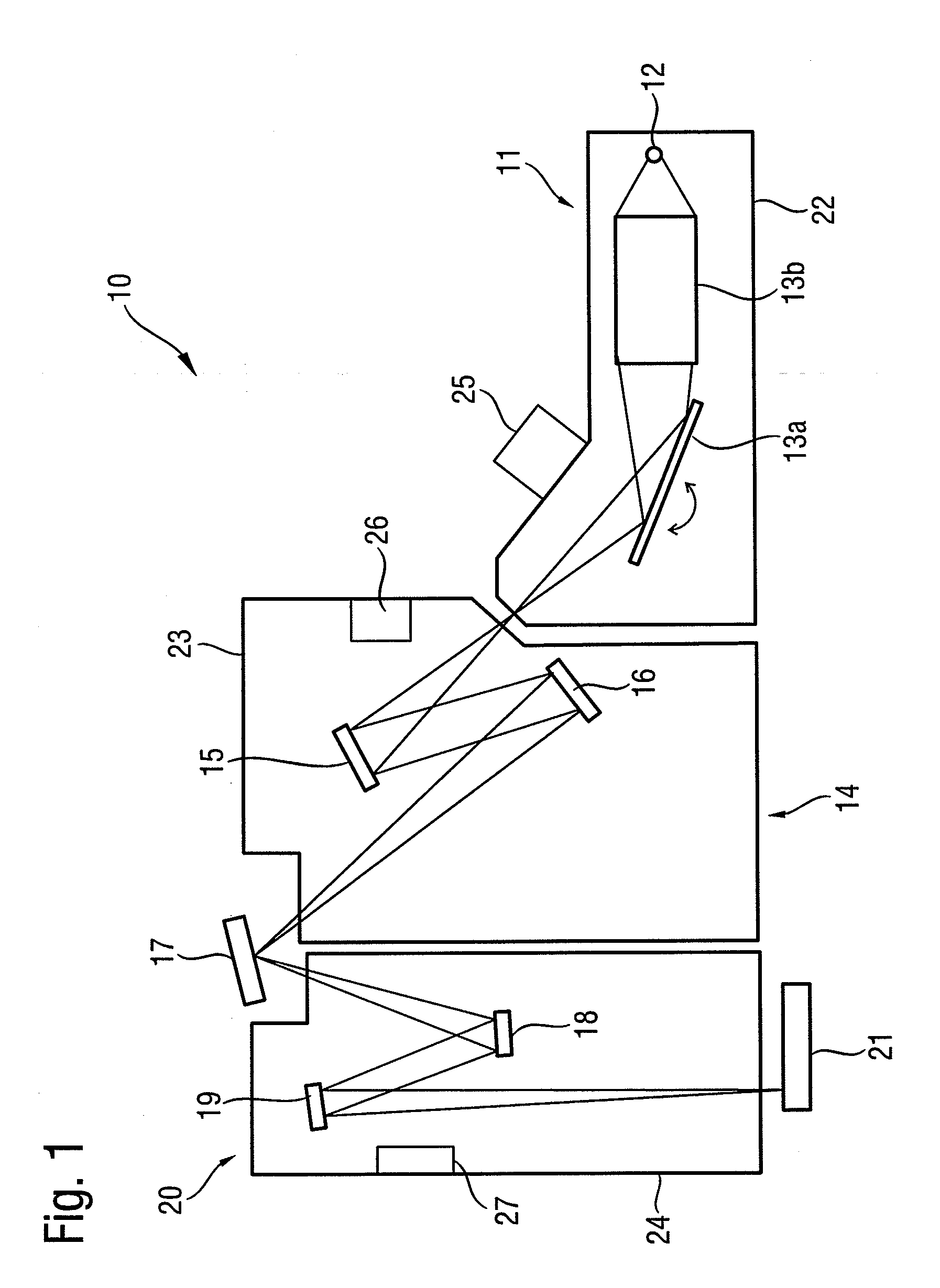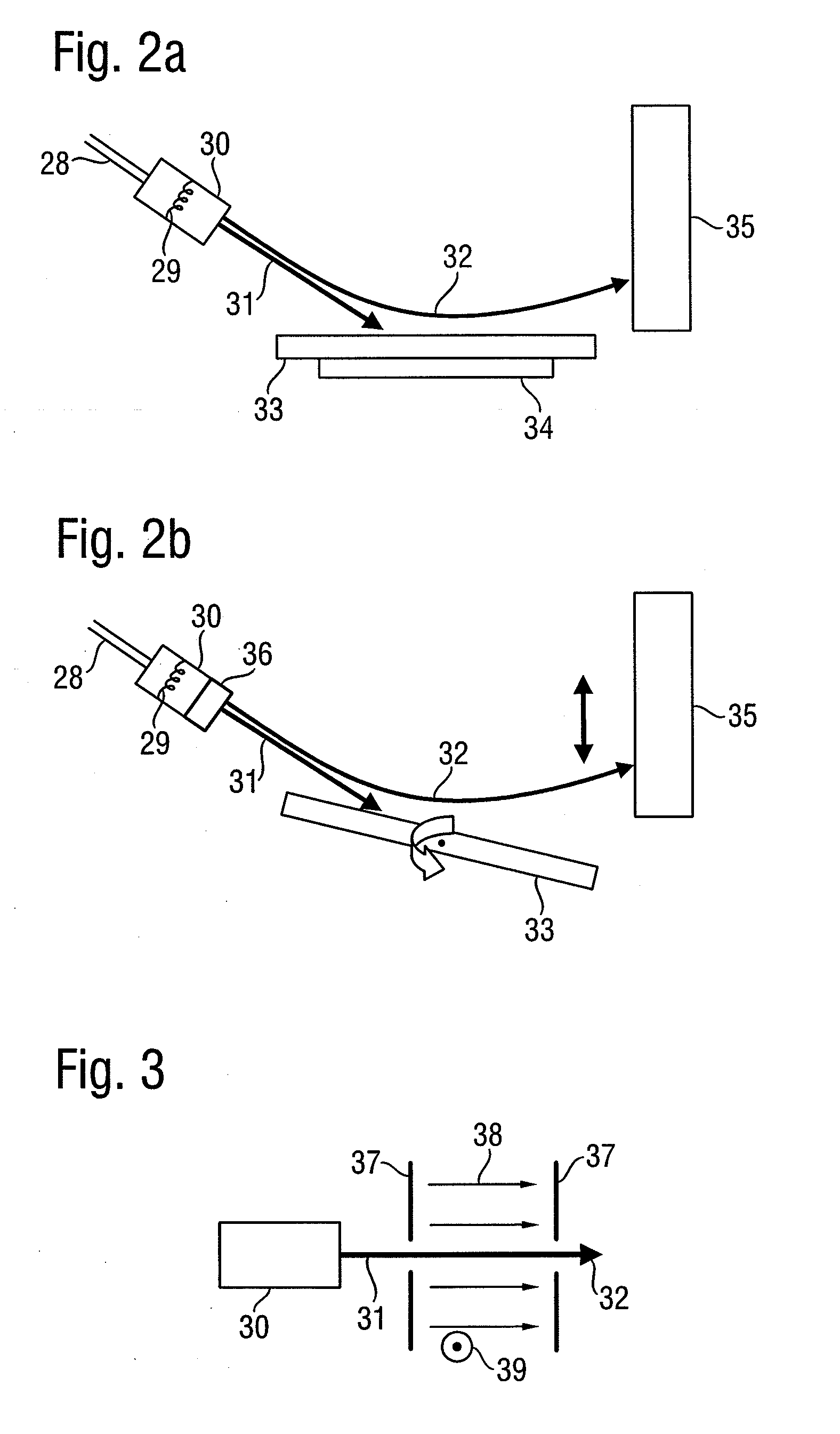Cleaning module, EUV lithography device and method for the cleaning thereof
a technology of euv lithography and cleaning modules, which is applied in the direction of instruments, printers, therapy, etc., can solve the problems of increasing the required cleaning time, increasing the cleaning efficiency per cleaning cycle, and increasing the cleaning time, so as to achieve the effect of prolonging the service li
- Summary
- Abstract
- Description
- Claims
- Application Information
AI Technical Summary
Benefits of technology
Problems solved by technology
Method used
Image
Examples
Embodiment Construction
[0024]An EUV lithography device 10 is represented schematically in FIG. 1. Main components are a beam shaping system 11, an illumination system 14, a photomask 17 and a projection system 20. The EUV lithography device 10 is operated under vacuum conditions or in special atmospheres with a low partial pressure of a gas or a combination of gases, in order that the EUV radiation is absorbed or scattered as little as possible in its interior. In the present example, a pressure of approx. 10−4 mbar or less is complied with for this purpose, also with a special atmosphere.
[0025]A plasma source or also a synchrotron can for example be used as radiation source 12. The emerging radiation in the wavelength range from approx. 5 nm to 20 nm is first bundled in collimator 13b. Moreover, the desired operating wavelength can be filtered out with the aid of a monochromator 13a by varying the angle of incidence. In the stated wavelength range, collimator 13b and monochromator 13a are usually constit...
PUM
 Login to View More
Login to View More Abstract
Description
Claims
Application Information
 Login to View More
Login to View More - R&D
- Intellectual Property
- Life Sciences
- Materials
- Tech Scout
- Unparalleled Data Quality
- Higher Quality Content
- 60% Fewer Hallucinations
Browse by: Latest US Patents, China's latest patents, Technical Efficacy Thesaurus, Application Domain, Technology Topic, Popular Technical Reports.
© 2025 PatSnap. All rights reserved.Legal|Privacy policy|Modern Slavery Act Transparency Statement|Sitemap|About US| Contact US: help@patsnap.com



